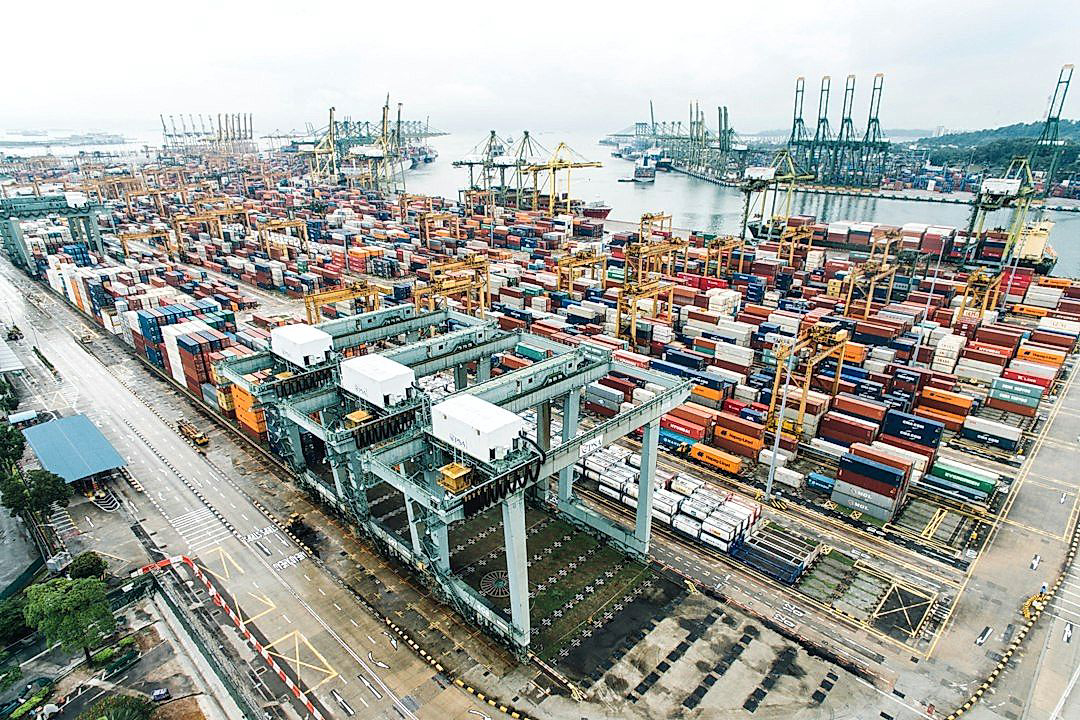Efficiency is at the heart of a successful business operation – the ability to deliver quality products promptly, while minimizing expenses.
For businesses in the fresh produce industry, this means managing an intricate supply chain process that is fraught with unique challenges.
Timing is critical, storage requirements are strict, and the goods are perishable.
Hence, streamlining the workflow is of utmost importance.
This article aims to provide practical tips to modify and improve processes for better efficiency.
Consequently, it will help businesses to significantly reduce delays, lower costs, and increase customer satisfaction.
Contents
- Steps To Streamline Your Produce Shipping Workflow
- 1. Implement technology for inventory tracking and monitoring.
- 2. Automate Scheduling and Routing for Shipment Pickups
- 3. Regularly update and maintain vendor relationships.
- 4. Implement temperature control for perishable goods
- 5. Use barcodes for accurate tracking and identification.
- 6. Regularly Audit and Analyze Shipping Operations
- 7. Provide staff with regular training and updates.
- The Bottom Line
Steps To Streamline Your Produce Shipping Workflow
1. Implement technology for inventory tracking and monitoring.
In the logistics domain, particularly when you’re dealing with produce shipping, implementing advanced technology for inventory tracking and monitoring is vital.
Without a robust technology system, it can be a herculean task to track the large numbers of fresh produce items being shipped regularly.
Moreover, ensuring that the produce inventory is up-to-date and accurate is crucial for a smooth shipping workflow, which underscores the importance of adopting technology.
Inventory tracking and monitoring, when done using the right technology, can significantly improve the efficiency and effectiveness of your produce shipping workflow.
The technology for inventory tracking can range from Retail Inventory Method (RIM) to Just-In-Time (JIT) inventory method, each having its own merits and demerits.
You need to choose a technology system based on your specific needs and circumstances.
For instance, if you’re dealing with perishable items, you might need a technology system that provides real-time inventory updates, allowing you to minimize wastage and maximize profits.
On the other hand, if you’re dealing with a large number of different produce items, you might need a technology that provides detailed item tracking to prevent mix-ups and ensure accurate deliveries.
Yet another important aspect of inventory tracking is monitoring the movements and locations of the produce items, for which GPS tracking technology can be particularly useful.
GPS-enabled inventory tracking systems keep you abreast of the items’ locations and their expected time of arrival, thereby helping you with accurate scheduling and routing.
Such advanced technology systems can also provide detailed analytics and reports on your inventory, giving you invaluable insights into your shipping workflow and helping you identify areas that need improvement.
Implementing technology for inventory tracking and monitoring, however, is not a one-time task, but a continuous process that requires regular updates and maintenance.
You need to stay updated on the latest technology trends in the logistics and shipping domain, and constantly fine-tune your technology system to keep it in sync with the changing needs of your produce shipping business.
An outdated technology system can lead to inaccuracies in inventory tracking, misdirected shipments, and other operational inefficiencies, all of which can eventually affect your bottom line.
Thus, investing in the right technology for inventory tracking and monitoring, and keeping it updated, is a crucial step in streamlining your produce shipping workflow.
2. Automate Scheduling and Routing for Shipment Pickups
Under the second step in streamlining your produce shipping workflow, we look at the need to automate scheduling and routing for shipment pickups.
Shipping produce requires careful planning and timing to ensure that the produce arrives fresh at its destination. Automating the process can save time and reduce errors.
When shipments are scheduled manually, there is a high chance of human error, which can cause delays or misrouted shipments. Such errors can also lead to customer dissatisfaction.
Notably, automation of scheduling and routing lessens the burden on your dispatch team. It allows them to focus on more critical tasks that improve overall workplace productivity.
With automated scheduling and routing, you can anticipate shipment pickups more accurately. It helps enhance the efficiency of your supply chain and optimizes the use of resources.
There’s a wide variety of software solutions available for automating scheduling and routing. Depending on the size and nature of your operations, you can choose a solution that fits your needs.
Automation goes far beyond merely replacing manual labor. Besides efficiency, it provides the potential for real-time tracking and updates, manifest generation, and planning optimal delivery routes.
For instance, most shipping software comes with a GPS tracking feature. It gives you real-time updates on the shipment’s location, helping you ensure timely deliveries.
Beyond ensuring timeliness, automation also bears significant implications for your business’ cost-efficiency. By planning the most direct routes, you can drastically cut fuel costs and vehicle maintenance expenses.
Regardless of the type of shipping software you choose, the real power of automation comes from its data collection and analysis capabilities. Such features allow you to analyze your shipments’ performance and plan for future improvements.
Another key benefit worth mentioning is the potential for reducing paperwork. Automation usually brings about digital documentation, providing ease of access and minimizing the chance of losing essential documents.
Automated routing and scheduling are not simply about adopting more advanced technology. It’s about leveraging modern tools to make your operation more efficient, lean, and competitive in today’s market.
Therefore, investing in this technology is an essential step for those looking to streamline their produce shipping workflow fully. It offers both immediate and long-term benefits for your business.
Overall, automation in scheduling and routing for shipment pickups contributes to the accuracy, efficiency, cost-effectiveness, and ultimately, the success of your produce shipping operations.
3. Regularly update and maintain vendor relationships.
Engaging in regular updates and maintenance of vendor relationships is crucial to the success of any business, especially in produce shipping.
This critical step contributes significantly to streamlining your produce shipping workflow.
A strong relationship with vendors ensures consistent supply of produce, guaranteeing that your shipping workflow proceeds without interruptions.
Regular communication with vendors fosters strong relationships and helps to address any potential issues promptly, ensuring that operations continue smoothly.
Moreover, maintaining a good relationship with your vendors aids in negotiating better terms for both parties, which can include price, delivery schedules and payment terms.
This tends to translate into increased efficiency and reduced operating costs for your business.
Effective vendor relationship management also provides an opportunity for continuous improvement in your produce shipping workflow.
Occasionally, vendors might come across new technologies or processes that could aid in enhancing your shipping operations.
Vendors are more likely to share this beneficial information with businesses with whom they have a strong relationship.
Therefore, regularly updating and maintaining healthy relationships with vendors could lead to operational advancements in your shipping procedures.
In addition, maintaining strong vendor relationships provides access to expert advice and industry insights.
As vendors are often industry specialists, they can provide your business with valuable insights and advice to optimize your shipping operations.
Finally, a key advantage of maintaining solid vendor relationships is their potential to assist in times of crisis.
Suppose there’s an unexpected delay or disruption in your shipping operations. In such cases, vendors with whom you have a strong relationship are likely to extend their support, possibly helping you to navigate through difficulties and streamline your produce shipping workflow.
Vendor relationships can clearly be a powerful tool in your arsenal for enhancing your produce shipping workflow.
Regular updates and maintenance of these relationships should thus, be an integral part of your business’s strategy to streamline your produce shipping workflow.
4. Implement temperature control for perishable goods
When dealing with produce shipping, the tender nature of perishable goods necessitates maintaining an optimal temperature.
These products are highly sensitive to temperature variations and therefore require effective temperature control mechanisms.
Failure to control temperature can lead to product loss through spoilage, which in turn negatively impacts profitability.
Temperature control thus plays a critical role in preserving the quality and freshness of produce en-route to their final destination.
With the advancement in technology, various temperature monitoring tools are available that ensure goods remain fresh from the point of packing to the point of delivery.
Such tools can be integrated into the shipping workflow to automatically regulate the temperature in line with the produce requirements.
These tools come in various forms like heat sensors, thermostats, and refrigeration units that provide real-time temperature information.
When the temperature deviates from the desired point, these tools alert the warehouse or vehicle operator to mitigate the impact before it becomes catastrophic.
Additionally, some of these tools interface with the inventory tracking system, providing a cohesive solution for effectively managing the shipping workflow.
Moreover, they also produce analytic reports highlighting any fluctuations, enabling a comprehensive audit trail for each shipment.
Training the warehouse staff and transport drivers to use these tools effectively is yet another critical facet of temperature control.
They should be well versed in managing temperature control system, intervening when necessary, and understanding the importance of maintaining the optimal temperature for each type of produce.
On a daily basis, the team should verify that all temperature control systems are operating correctly and take immediate remedial action when a fault is detected.
Incorporating temperature control into the produce shipping workflow can significantly reduce preventable losses and improve the quality and lifespan of perishable goods.
To effectively implement this, an ongoing relationship with a reputable temperature control system vendor that provides quality products and after-sales services is critical.
5. Use barcodes for accurate tracking and identification.
As an integral part of streamlining your produce shipping workflow, the utilization of barcodes for accurate tracking and identification is a strategy that cannot be overlooked.
Barcodes, in essence, facilitate the quick and precise identification of items within an inventory, thereby enhancing operational efficiency.
They serve as a unique identifier for each product, ensuring no two items have the same coding.
The adoption of these coded patterns, widely used in all types of industries around the world, radically reduces the risk of errors that can occur when manually entering product identifiers.
This is particularly crucial in the realm of produce shipping, where the logistics involved in handling perishable goods can be complex and sensitive to inaccuracies.
In addition to reducing errors, barcodes also significantly streamline the process of tracking shipped goods.
Upon scanning the barcode, information pertaining to the origin, destination, and contents of the shipment becomes readily available, greatly aiding in the efficient management of stock levels.
By using barcoding systems, companies are not only able to track their shipments but also gather essential data about the shipping process that can be used to further refine and enhance their operations.
These systems operate by capturing and recording key data points throughout the shipping process, providing valuable insights into areas such as shipping times, routing efficiency, and product handling.
There are various types of barcode scanners available, ranging from simple hand-held devices to more complex fixed-mount scanners used in high-volume environments.
These different scanner types afford businesses the flexibility to choose the most suitable option based on their specific needs.
It should be noted that, while barcoding infrastructures can require a significant initial investment, the long-term benefits in terms of increased efficiency and reduced errors often justify this outlay.
Therefore, the adoption and implementation of barcodes in produce shipping workflows, is a strategic move towards a more monitored and controlled distribution process.
Moreover, barcode labeling and scanning play an important role in maintaining regulatory compliance for produce shipping, further reinforcing the importance of this technology in streamlining workflows.
The accurate tracking and identification provided by barcodes, offers a greater level of certainty and control over produce shipping workflows, contributing significantly towards enhancing product quality and customer satisfaction.
6. Regularly Audit and Analyze Shipping Operations
To ensure the utmost efficiency in your produce shipping workflow, it is VITAL you regularly audit and analyze your shipping operations.
These audits will provide necessary insights into systemic issues and inefficiencies allowing for necessary adjustments.
Effective shipping operation audits can identify problems in inventory management, handling processes, storage conditions, or human errors that can be detrimental to produce quality and timely delivery.
Implementing standardized procedures for auditing, like the ISO 19011 guidelines for auditing management systems, can assure a consistent, systematic, and professional approach to the auditing process.
Analyze the collected data carefully and use it to develop effective solutions and preventive measures against potential issues.
Remember, to make the most out of the data, create clear analytics reports that demonstrate your shipping operation’s overall performance and the areas that require improvements.
Utilize automated tools or software that can track, record, and analyze data for more accurate and efficient audits.
Such tools can eliminate the risks of human error and allow for real-time auditing, which is incredibly beneficial in a fast-paced industry like produce shipping.
Consider involving internal or external auditors who are skilled and experienced in logistics and shipping operations.
Auditors will help bring a fresh perspective and objective examination of the workflow, identifying areas that may be overlooked by those who are too close to the process.
Stakeholder involvement in audit processes is paramount to ensure the necessary changes are understood and implemented effectively.
Engage employees, suppliers, and relevant stakeholders in your auditing process, encouraging accountability and ownership of the workflow improvements.
Promote transparency and open communication during audits for accurate information gathering, collective awareness and effective problem-solving.
Also, auditing and analyzing shipments allow you to track the effectiveness of any changes or improvements made.
Doing these checks after implementing changes can show you if they’re working as expected or if further modifications are needed.
Make ongoing audits a standard procedure in your operations rather than a one-time event.
Ongoing audits will ensure that your shipping workflow remains optimized over time, proactively identifying and dealing with issues before they escalate.
7. Provide staff with regular training and updates.
Training and educating your staff on a regular basis is a crucial step in streamlining your produce shipping workflow.
It is not enough to simply provide your workers with the necessary tools and technologies, they must also understand how to use them effectively.
When your staff members are adequately trained, they are able to correctly utilize the inventory management systems, automated scheduling and routing software, and other tools designed to enhance your workflow.
Moreover, ongoing training keeps your workers up-to-date on evolving protocols, procedures, and technological advancements within the shipping industry.
Providing regular training and updates to the staff is a key element in maintaining the efficiency and functionality of your produce shipping operations.
This includes regular instruction on how to maintain strong vendor relationships, handle perishable goods, and conduct quality assurance audits correctly.
Furthermore, a well-trained staff can also significantly reduce errors in the shipping process, thus reducing delays and increasing customer satisfaction.
One of the most effective ways to ensure that your staff is continuously trained and updated is by organizing regular workshops or training sessions.
Note that these training initiatives do not have to be time-consuming or resource-intensive, but they should be consistent and reflect the evolving needs of your organization and the shipping industry at large.
Besides, to ensure that the training is impactful, it can be beneficial to incorporate real-world scenarios and hands-on activities into your educational programs.
Including feedback mechanisms in these training sessions can also ensure that your staff members are actively learning and implementing the skills they learn.
Additionally, regular training ensures that all staff members are on the same page regarding the company’s procedures and protocols, enhancing team collaboration and reducing potential misunderstandings.
Ultimately, investing in regular staff training and updates will not only enhance your shipping operations but also foster a positive workplace culture that values efficiency, innovation, and continuous learning.
Therefore, to streamline your produce shipping workflow efficiently and effectively, it is paramount to make regular staff training and updates an integral part of your operations.
The Bottom Line
Optimizing the supply chain is crucial for the success of any venture, with technology and automation playing key roles in streamlining processes.
Regularly updating and maintaining vendor relationships ensure efficient operations, while temperature control strategies for perishable goods minimize wastage and ensure quality.
Accurate tracking and identification, thorough auditing, and consistent staff training are other important factors that drive efficiency.
All these measures contribute to creating an adaptable, agile, and efficient supply chain which, when implemented correctly, can be a significant game-changer.
Indeed, an optimized supply chain is pivotal not just to meet customer satisfaction, but also to help businesses thrive and retain their competitive edge in an increasingly dynamic marketplace.




